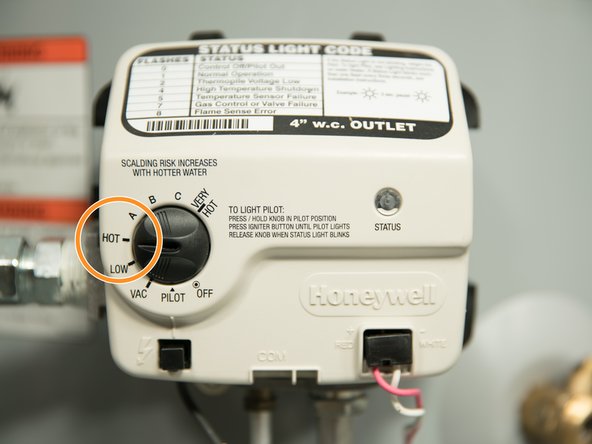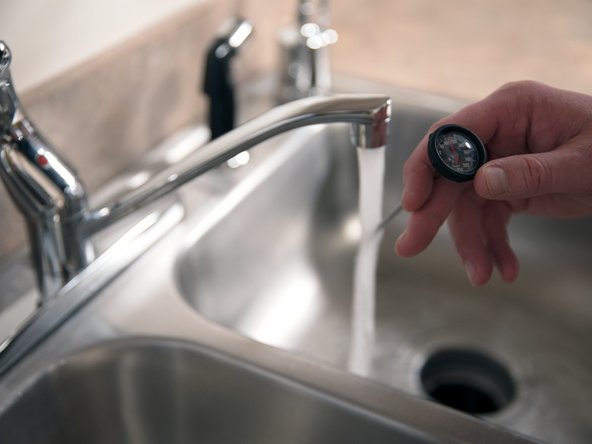Introduction
The information on this web site is supplemental to the printed instructions that came with your water heater. To reduce the risk of property damage, serious injury or death, read and follow all labels on the water heater and the safety instructions in the printed owner's manual.
Tools
Parts
-
-
Thermometer
-
Thermostatic mixing valves
-
-
-
The thermostat on this water heater should be set to approximately 120°F to reduce the risk of scald injury. You may wish to set a higher temperature to provide hot water for automatic dishwashers or laundry machines, to provide more hot water capacity, and to reduce bacterial growth.
-
WARNING! Higher temperatures increase the risk of scalding, but even at 120°F, hot water can scald. Install point-of-use Thermostatic Mixing Valves to reduce the risk of scalding.
-
If you increase the water heater’s temperature setting, install Thermostatic Mixing Valve(s) at each point of use to reduce the risk of scalding. Adjust Thermostat Mixing Valves at each point of use to 120°F or lower.
-
-
-
Set the thermostat on the water heater to "HOT" which is approximately 120°F.
-
If higher temperatures are required, turn the control knob to a higher setting.
-
WARNING! Higher temperatures increase the risk of scalding. If you have increased the temperature setting above 120°F, install Thermostatic Mixing Valves at each point of use and set them to 120°F or lower.
-
-
-
Install Thermostatic Mixing Valves at each point of use.
-
Adjust Thermostatic Mixing Valves according to manufacturer's instructions.
-
You can set the water heater's thermostat higher than 120°F if you install thermostatic mixing valves at each point of use and set them to 120°F or lower.
-
WARNING! Higher temperatures increase the risk of scalding, but even at 120°F, hot water can scald. Install point-of-use Thermostatic Mixing Valves to reduce the risk of scalding.
-
-
-
Check water temperature at several points of use in your home (for example, bathtub faucet, shower, or lavatory sink).
-
Adjust the Thermostatic Mixing Valves so that water temperature at any fixture is at or below 120°F. If you aren’t sure how to adjust the Thermostatic Mixing Valve settings, or aren’t sure if you have Thermostatic Mixing Valves, contact a qualified person for assistance.
-
WARNING! Because of the increased risk from scalding, if you set the water heater’s thermostat(s) higher than 120°F, Thermostatic Mixing Valves at each point of use are recommended to reduce the risk of scalding.
-








